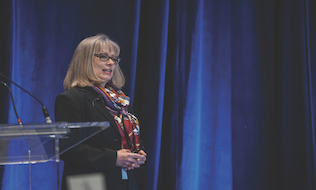

Across the globe, the defined contribution retirement model is in transition on a number of fronts. Jean Young, senior research analyst at the Vanguard Group Inc.’s Centre for Investor Research, spoke at Benefits Canada’s 2017 Defined Contribution Plan Summit about several big issues plan sponsors face as they help prepare their employees for retirement.
In recognition that many plan members don’t have the skills or desire to choose their own investments and manage their money, target-date funds will likely dominate 401(k) plans in the United States within a few years, said Young. Although target-date funds show some promise for better outcomes, debate continues about the structure of the products.
Read: How are different countries tackling decumulation
Another major issue is the need to broaden the framing of retirement saving to income adequacy from accumulation. “The three-legged stool is no longer the case,” said Young. “Today, it is very complicated, because each household comes to the table with a different mix of assets — everything from home equity and personal savings to DB pensions, health savings accounts and education savings. And there isn’t a simple solution for how to translate these assets into retirement income.”
Globally, defined contribution plans are increasingly becoming the norm, with an emerging consensus in several areas. In regards to contributions policy, for example, there’s a growing awareness that mandatory or automatic features are necessary to encourage higher savings rates. But that puts even more emphasis on setting defaults properly.
Another issue is the need to “port over the institutional pricing of DB plans into DC plans so individuals can retain more,” Young added.
Read more stories from the DC Plan Summit
